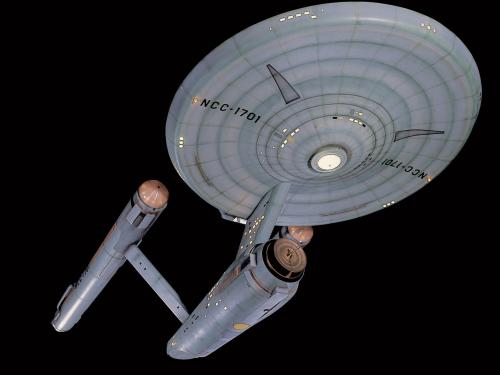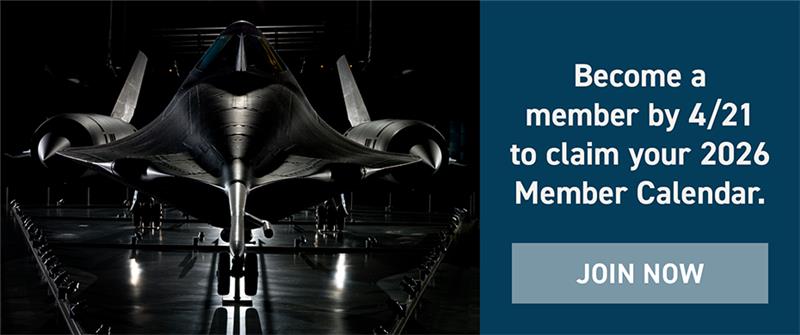
Stories of daring, stories of technological feats, stories of prevailing against the odds ... these are the stories we tell at the National Air and Space Museum. Dive in to the stories below to discover, learn, and be inspired.
Showing 1301 - 1310 of 1761

June 30, 2015
In this four-part series, curators Russ Lee and Evelyn Crellin take an in-depth look at the Lippisch DM 1, an experimental German glider. At the conclusion of Part 3, the glider was tested in the National Advisory Committee for Aeronautics (NACA) Full-Scale Wind Tunnel. In this final post, Russ and Evelyn connect those early tests with the world's first delta wing aircraft. We have found no written confirmation that Convair incorporated the NACA data from the DM 1 directly into their groundbreaking work to design and build the first jet-propelled delta wing aircraft.

June 27, 2015
"Buck...Rogers...in the twenty-fifth CEN-TURYYY!" This enthusiastic refrain from a deep-voiced announcer is how the popular 1930s radio show featuring space hero Buck Rogers began. It was followed by the roar of a spaceship blasting off, simulated by the sound of an air conditioning vent. Many of you have probably never heard of Buck Rogers, but he was a household name in the 1930s and ‘40s. Rogers was the very first science fiction comic strip hero. The character, at first named Anthony Rogers, was introduced in the first science fiction magazine, Amazing Stories, in August 1928. In a story titled, Armageddon 2419 A.D., written by Philip Nowlan, Rogers was a 29-year-old World War I veteran who took a job inspecting mines for radioactive gases.

June 25, 2015
The Scene: A new wind tunnel, the NACA Full Scale Tunnel at the NACA Langley Memorial Aeronautical Laboratory, Hampton, Virginia The Time: May 27, 1931 The Action: A Navy Vought O3U-1 “Corsair II” –the whole airplane—is mounted in the wind tunnel.
June 23, 2015
In this four-part series, curators Russ Lee and Evelyn Crellin take an in-depth look at the Lippisch DM 1, an experimental German glider. At the conclusion of Part 2, U.S. Army General George S. Patton ordered the students to resume construction of the glider at the Prien Airport. A number of American visitors arrived to witness the construction of the DM 1, including the famous American pioneer of aerodynamics Walter Stuart Diehl.

June 18, 2015
In April, the Smithsonian X 3D team pointed their lasers and scanners at the Bell X-1, the same iconic aircraft that shot Capt. Charles 'Chuck' Yeager across the pristine skies of the Mojave Desert to a record-breaking speed. On October 14, 1947, in the Bell X-1, Yeager became the first pilot to fly faster than sound. Now, we can all get as close to the Bell X-1 as Yeager himself with the recently released 3D model of the exterior of the aircraft. In honor of the new 3D model and that resounding flight, we've compiled five facts to help you begin your exploration of the aircraft and that key moment in history. We also reached out to Smithsonian X 3D team to find out exactly how one goes about capturing a 3D model. But first, our five facts: 1. To conserve fuel, the X-1 was flown up to 7,620 meters (25,000 ft) attached to the bomb bay of a modified Boeing B-29 bomber and then dropped.

June 16, 2015
In this four-part series, curators Russ Lee and Evelyn Crellin take an in-depth look at the Lippisch DM 1, an experimental German glider. At the conclusion of Part 1, construction of the glider had begun in August 1944 by students of the Flugtechnische Fachgruppe (FFG). Construction of the experimental glider was derailed dramatically on September 11 and 12, 1944, when Allied bombers struck Darmstadt, including the building that housed the FFG D 33 project.

June 12, 2015
As summer heats up in Washington, DC, swimming pool attendance skyrockets. For Women Air Service Pilots (WASPs) training to fly military aircraft during World War II at Avenger Field in Sweetwater, Texas, a dip in the pool was more than fun and games. For any pilot, there exists the possibility of an aircraft going down over water. To prepare, WASPs without any swimming abilities were enrolled in a regular swimming class.

June 09, 2015
In this four-part series, curators Russ Lee and Evelyn Crellin take an in-depth look at the Lippisch DM 1, an experimental German glider.

June 05, 2015
When the Boeing Milestones of Flight Hall opens in the summer of 2016, one of its central artifacts will be the Star Trek starship Enterprise studio model, used to film the original television series. As a member of the curatorial team that has been working on this exciting revision of the Milestones Hall, I have been immersed in the culture and lore of that artifact, as I have sought to place it in the context of the Lunar Module, Spirit of St Louis, Bell X-1, and other iconic artifacts that will populate the space. What follows are some observations.

June 03, 2015
The first spacewalk by an American, which took place June 3, 1965, marked a new chapter in human exploration of space. Images of Edward White II floating in space with the backdrop of a beautiful blue and white Earth spread a sense of wonder around the world – humans could actually go to this place and it was amazing. While the spacewalk (or EVA, which stands for extra-vehicular activity) lasted less than 20 minutes, its significance for the future of human spaceflight in the American context cannot be underestimated.
